口径约8×8cm
不可机洗
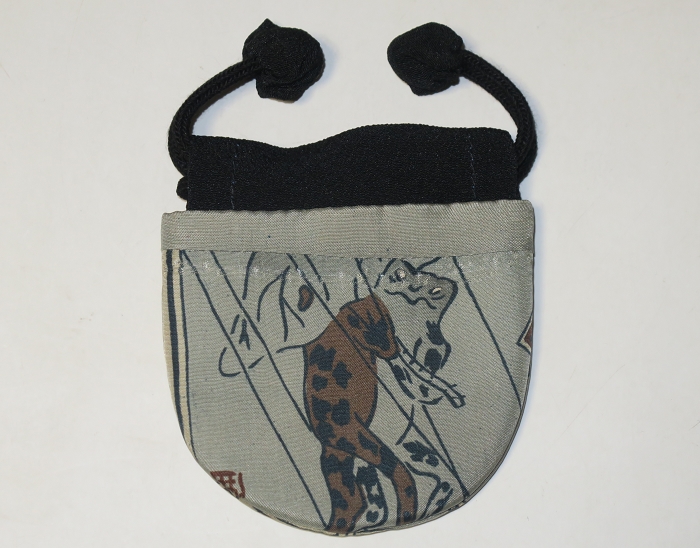
长崎和服师手工制作,真正取材古代(明治以前)正绢和服,里外双面工,结实美观。图案是尾崎红叶创作的脍炙人口的童谣“归来”(とめてもかえる),日文中“蛙”和“归”的发音一样,所以蛙寓意平安归来。8cm的布料能够截取一幅完整版画的概论几乎是0,这是目前为止仅有的奇迹。
とめてもかえる
なだめても
かえるかえるの
みひょこひょこ
とんだ不首尾の裏田圃
ふられついでの夜の雨
尾崎紅葉江戸小唄「とめてもかえる」
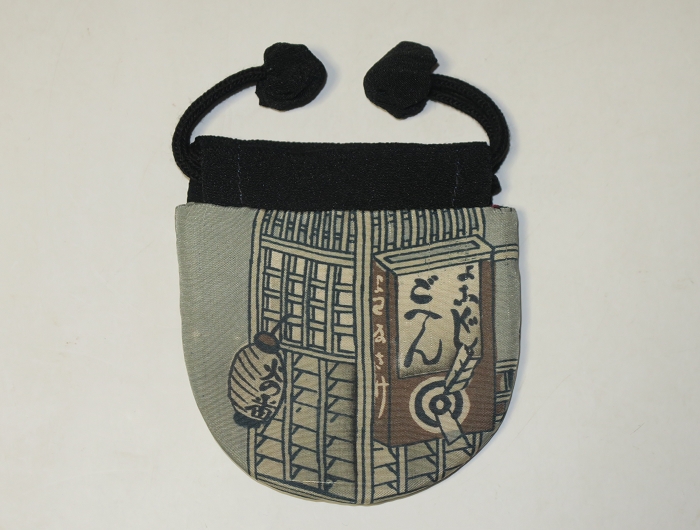
時代物の正絹着物地(焦げ茶系地)を使い、羽二重で作った、味わいになるとっても可愛いキルト小袋。出来るだけ良い柄行の所を使用したが、口布の下付近継ぎの跡有。
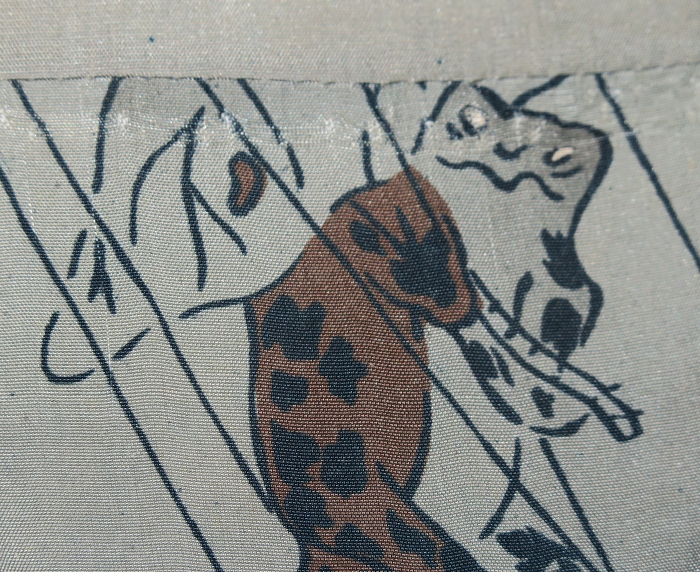
「とめてもかえる なだめても かえるかえるの みひょこひょこ とんだ不首尾の裏田圃 ふられついでの夜の雨」・尾崎紅葉の江戸小唄「とめてもかえる」にちなんだ粋でユーモラスな草紙柄。掛け軸にでもありそうな味わい深い柄。
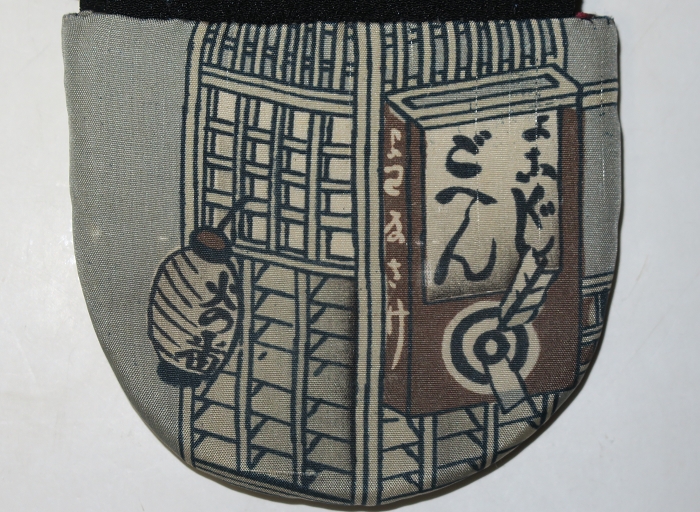
小丸袋とポチ袋の中間くらい、キルト入りでふんわり柔らかなので、大切な根付や帯留めなど小さなお品の整理、保管、携帯用袋としてもお洒落。
Japanese clothing
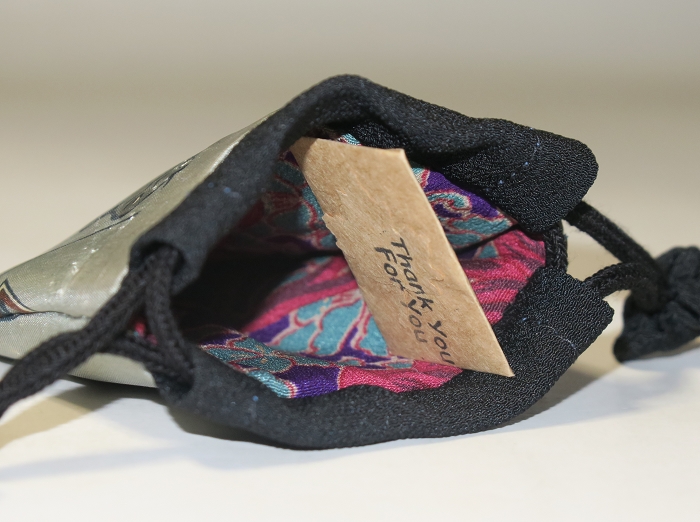
There are typically two types of clothing that the Japanese wear: the Japanese clothing (和服wafuku), such as kimonos, and Western clothing (洋服yōfuku). Japanese traditional fashion combines multiple styles that reflect early Japan’s visual culture. It represents the culture’s visible artistic and traditional values and joins them together to create a form of fashion recognizable to foreign cultures.
The most well known form of Japanese traditional fashion is the kimono (translates to “something to wear”), Although the traditional wear for Japan became popularized during the Heian period (794-1185) and was worn casually at the time, it is now rare to find people doing so due to the difficult process associated with the wardrobe.
Each type of garment corresponds to a special occasion, such as festivals, ceremonies, or weddings. The materials, colors, and layers used for the clothing differentiate them and their significance, as the looks are also often worn seasonally. The clothing that embodies the culture represents Japan’s traditional values that remain in their community to this day.